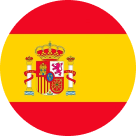Challenges of technical translation
Specialists who are happy to translate technical texts are considered to be top-notch translators. Translating the instruction manual for an iron or the user manual for a woodworking machine can be difficult.
First of all, inaccuracies in the meaning of technical texts have serious consequences. Incorrectly translated safety rules and instructions can lead to bad moods or serious injuries to the user.
Secondly, the responsibility to the customer of the translation is too high. An incomprehensibly operating device (as judged by the manual) or other technical product will «damage» the manufacturer’s reputation, generating unflattering reviews on the Internet and, as a result, lowering sales. Of course, the translator will be responsible for this as well.
If you have any questions, you can consult us by phone:
+375 44 768-02-88
+375 29 257-14-58
You will find the costs for services in the section Prices.
What is a technical text translator required to know?
A knowledge of a foreign language at a level that allows a full understanding of the text to be written.
A good grasp of special terminology in the source and target languages or an effective search for relevant terminology on the Internet or in special dictionaries (because one cannot know everything — there are texts about new inventions).
Have knowledge of the subject matter to be translated.
In the field of technical translations are particularly valued professionals who have two diplomas at once. One of these certifies the translator’s qualifications, while the other certifies that they have a technical specialist degree.
Why are technical texts so difficult?
In every language there are many words with multiple meanings. For technical texts this is a disaster. Only the most experienced specialist translators are able to select terms that exactly reflect the technical term in question and do not distort the meaning of the translation.
When translating technical texts, it must be remembered that the same term may have a different meaning in different countries.
Texts with abbreviations and acronyms are also difficult. The specialist needs not only to know what they mean, but also to have a detailed idea of how the equipment or the technical process works.
When it comes to technical innovations from abroad, the related texts often contain terms that are unknown in Russian-speaking countries. This makes it necessary to familiarise oneself with a lot of additional information.
Characteristics of a well-translated technical text:
Accuracy and consistency. The meaning is conveyed unchanged, all abbreviations and acronyms coincide with the concepts assigned to them.
Consistency of terminology. The translator checks that each term is in accordance with the generally accepted technical terminology.
Absence of spelling and syntax errors. Also pay attention to compliance with lexical norms, correctness of the structure.
Consistency with style. Translation of technical texts is most often done in a scientific style which is characterised by brevity and abundance of specialised terms. The text must, however, be as legible and comprehensible as possible to the potential reader (consumer of the product or service).
How does our translation company ensure the quality of technical translation?
Firstly, all technical translations are carried out by a team of translators who specialise only in this subject and have extensive experience in translating technical texts.
Secondly, our translators often use «parallel» texts available on the Internet. For example, when translating an instruction manual for an iron, the translator can find similar texts on the Internet and pick up the terminology from these translations, because translating the terminology correctly is the most important and complex part of translating instructions.
Thirdly, our editorial team proofreads the translation and, if necessary, does some additional layout of the text. Instructions are often accompanied by complicated formatting which is full of drawings, schemes and various pictures. All of this we are able to retain and transfer to the translation.







